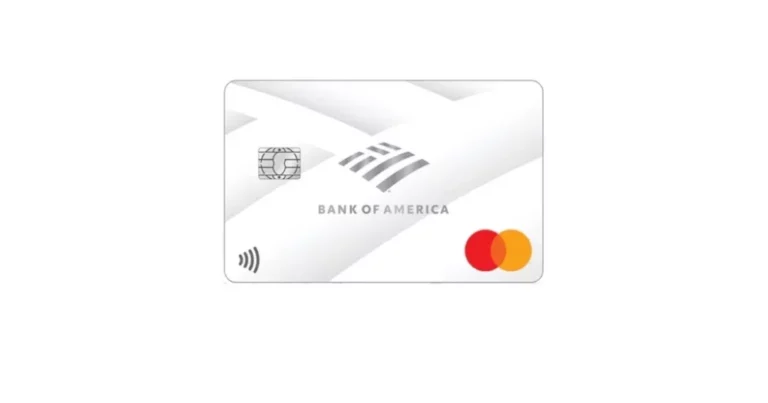What Is Compound Interest? How It Can Build or Break Your Finances
Anúncios
Compound Interest: The Silent Force That Builds Wealth — or Destroys It
Compound interest is one of the most powerful and misunderstood concepts in personal finance. It can either grow your wealth steadily over time or trap you in a cycle of ever-increasing debt. Knowing how it works — and how to use it wisely — is essential for anyone who wants to build long-term financial security and independence.
In this comprehensive guide, we’ll break down what compound interest is, how it differs from simple interest, where you encounter it in everyday life, and — most importantly — how to make it work for you instead of against you.
What Is Compound Interest?

Anúncios
Compound interest is the process of earning interest not just on your initial principal (the money you invest or borrow), but also on the accumulated interest from previous periods. This effect is often referred to as “interest on interest.” Over time, this creates a snowball effect, where your money grows exponentially rather than linearly.
To put it simply: with compound interest, your money makes money — and then that new money makes more money.
Anúncios
This is why even small amounts, invested consistently over time, can lead to substantial growth. And it’s also why debts with compound interest — like credit cards — can spiral quickly if you don’t stay on top of payments.
The Math Behind It: The Compound Interest Formula
The standard mathematical formula for compound interest is:
A = P(1 + r/n)^(nt)
Where:
-
A = Future value (the amount you’ll have)
-
P = Principal (the initial amount you start with)
-
r = Annual interest rate (expressed as a decimal)
-
n = Number of times interest is compounded per year
-
t = Number of years the money is invested or borrowed
Example:
Let’s say you invest $1,000 at an annual interest rate of 10%, compounded once per year for 5 years.
Using the formula:
A = 1000(1 + 0.10)^5 = $1,610.51
Compare that to simple interest (which calculates only on the principal):
$1,000 + ($1,000 × 0.10 × 5) = $1,500
Compound interest gives you an extra $110.51 — simply because your interest earned interest.
Compound Interest in Action: Growing Wealth Over Time
To really understand the power of compounding, let’s look at two real-life scenarios.
Scenario 1: Starting Early Pays Off
Sarah starts investing $200 per month at age 25, with an average annual return of 8%. She continues this for 40 years.
-
Total contributed: $96,000
-
Final amount: Over $622,000
The power of compounding turned less than $100K into more than six times that amount, simply by starting early and being consistent.
Scenario 2: Delayed Start = Lost Growth
Mike starts the same investment strategy but waits until age 35 — 10 years later.
-
Total contributed: $72,000
-
Final amount: Around $294,000
Even though Mike only invested $24,000 less, his final balance is more than $300,000 lower than Sarah’s. That 10-year delay cost him hundreds of thousands in compound growth.
The lesson: Time is more valuable than money when it comes to compounding.
The Flip Side: Compound Interest in Debt
Compounding doesn’t only work for your benefit — it also works against you when you owe money. This is particularly true for high-interest debt like credit cards or payday loans.
Example: Credit Card Debt
Jane owes $5,000 on a credit card with a 20% APR, compounded monthly. She makes only the minimum payments (about 2% of the balance).
After 10 years, she will have paid more than $7,500 in interest alone, more than doubling her original debt. And she may still have a balance left.
This shows why compound interest, when applied to debt, can quietly wreak havoc on your finances if left unchecked.
Frequency Matters: Daily vs. Monthly vs. Yearly Compounding
The number of times interest is compounded per year (known as the compounding frequency) can dramatically affect how fast your investment grows — or how quickly your debt escalates.
Here’s how $1,000 at 10% interest grows after 1 year, depending on compounding frequency:
| Compounding Frequency | Final Amount |
|---|---|
| Annually | $1,100.00 |
| Quarterly | $1,103.81 |
| Monthly | $1,104.71 |
| Daily | $1,105.16 |
It may seem like small differences initially, but over decades, the gap widens significantly. Always consider how often interest is compounded when evaluating a loan or investment product.
Rule of 72: A Simple Way to Estimate Doubling Time
The Rule of 72 is a quick mental math trick to estimate how long it will take for your money to double with compound interest.
72 ÷ Interest Rate = Years to Double
For example:
At a 6% return, your money will double in approximately 12 years.
At an 8% return, it will double in just 9 years.
This simple rule demonstrates just how powerful higher interest rates and longer time horizons are when compounding is involved.
Where You’ll Encounter Compound Interest

Compound interest shows up in various areas of everyday life — some beneficial, some dangerous.
Positive Use Cases:
-
Savings accounts
-
Retirement accounts (401k, Roth IRA)
-
Certificates of deposit (CDs)
-
Dividend reinvestment plans
-
Long-term investment portfolios
Negative Use Cases:
-
Credit card balances
-
Payday and personal loans
-
Student loans in deferment
-
Mortgage interest (especially in early years)
Simple Interest vs. Compound Interest
Understanding the difference between simple and compound interest is essential for evaluating your financial choices.
| Feature | Simple Interest | Compound Interest |
|---|---|---|
| Based On | Principal only | Principal + Accumulated Interest |
| Growth Rate | Linear | Exponential |
| Long-Term Effect | Lower | Much Higher |
| Common Use Cases | Car loans, short-term | Retirement, credit cards |
Compound interest rewards time and consistency — but only when you’re earning it.
Tools to Calculate Compound Interest
You don’t need to be a math genius to benefit from compounding. Here are some tools that make it easy:
-
Investor.gov Compound Interest Calculator
-
Bankrate.com savings and investment calculators
-
Mint, YNAB, and Monarch Money for long-term goal tracking
-
Excel or Google Sheets using the FV (future value) formula
These tools let you input your starting amount, interest rate, compounding frequency, and duration to project future growth.
Practical Ways to Make Compound Interest Work for You
Want to put compound interest to work? Here’s how:
1. Start As Early As Possible
The earlier you start, the more time compounding has to work. Even small amounts invested in your 20s can outperform large contributions made later.
2. Automate Your Savings and Investments
Consistency beats perfection. Set up automatic transfers to your savings or investment account so you never forget.
3. Reinvest Your Earnings
Always opt to reinvest dividends or interest, rather than cashing them out. This ensures that your money continues to compound.
4. Use High-Yield and Favorable Accounts
Choose accounts with higher interest rates and favorable compounding policies — such as daily or monthly.
5. Avoid Carrying High-Interest Debt
The interest you pay on debt compounds just like savings — but against you. Pay off credit cards and payday loans quickly to avoid the snowball.
How Compound Interest Can Work Against You
Student Loans
When you defer student loan payments, interest continues to accrue. If that unpaid interest is capitalized, it gets added to your balance — which then earns more interest.
Payday and Title Loans
These often come with extremely high APRs, compounded rapidly — creating a cycle of endless payments and deepening debt.
Credit Card Debt
Revolving balances compound interest daily. If not paid in full each month, even small balances can grow out of control over time.
Common Myths About Compound Interest
Let’s clear up a few misconceptions:
Myth #1: You Need a Lot of Money to Start
False. Even $20/month over 30 years can grow into thousands.
Myth #2: It’s Too Late to Start
It’s never too late. Starting at 40 or 50 is still better than never starting at all. Maximize your contributions and focus on consistency.
Myth #3: All Accounts Compound the Same
No. The frequency and interest rate vary widely. A daily compounding 3% account grows faster than a monthly 2.5% one. Always read the fine print.
Action Plan: 5 Things You Can Do Today
-
Open a high-yield savings account or Roth IRA
-
Set up a recurring monthly deposit (even $25 makes a difference)
-
Choose to reinvest dividends and interest
-
Use a compound interest calculator to visualize your goals
-
Pay off credit cards to avoid compounding debt
Final Thoughts

Compound interest is a force that works 24/7 — whether it’s helping you build wealth or quietly growing your debt. The key to financial success is not just understanding it, but actively harnessing its power in your favor.
Start early, stay consistent, and avoid the traps of high-interest debt. Over time, your small efforts will multiply into a secure financial future. In the world of money, time and discipline are your greatest allies — and compound interest is their secret weapon.
Let it work for you, not against you.

Post Comment